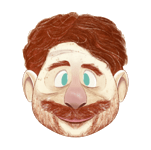Giorgio

Name
Giorgio
Age
58
Country
Italy
Area
urban
Life course
working age adult
Need
Chronic conditions and / or social needs
Connectivity
mobile device
Two years ago Giorgio had colon cancer and received surgical treatment and chemotherapy. He also suffers from hypertension and one year ago he had a stroke which has left him unable to walk. Giorgio has skin phototype I and his father died of melanoma. He has monthly checkups with his GP; during the last checkup the GP noticed the transformation of a mole. Considering his family history and personal risk factors the GP started care and support planning. The GP sent an image of the mole to a specialist dermatologist through a teledermoscopy platform. During teleconsultation via the teledermoscopy platform patients are triaged according to dermatoscopic features of the lesions evaluated. Giorgio’s lesion was classified as “severe graded atypia” and surgical immediate removal was planned. Histological examination confirmed a melanoma diagnosis.
Internet usage
Mobile device skills
Affinity to new tech
Digital Health Literacy
Assistance (ICT use)
What's important to Giorgio
– Spending time with his family and friends
– Reading
– Going to the beach
– Personal hygiene and a smart appearance
– Reading
– Going to the beach
– Personal hygiene and a smart appearance
Health concerns
– Hypertension
– Previous colon cancer
– Previous stroke means he‘s unable to walk
– Previous colon cancer
– Previous stroke means he‘s unable to walk
Daily living
– Less able to get around and do things
– Spends much time at home reading
– Spends much time at home reading
Health tests
– Blood tests
– Blood pressure
– Cholesterol
– TC Scan
– INR
– Ecography/ Ultrasound
– Blood pressure
– Cholesterol
– TC Scan
– INR
– Ecography/ Ultrasound
Events, issues & personal concerns
– He is not completely able to self care
– Difficulty in walking
– Difficulty in walking
Treatment: medications, therapies, etc.
– Antihypertensive
– Anticoagulant and antiaggregant
– Previously chemotherapy
– Physiotherapy support
– Anticoagulant and antiaggregant
– Previously chemotherapy
– Physiotherapy support
Own resources & assets / support
Giorgio has family, friends and professional (medical and paramedical) support
Care professional concerns
– The involvement of GPs constitute a new resource for expanding early detection systems such as dermoscopy to a larger population of patients potentially at risk of developing skin cancers
– Cooperation between high specialty hospital units and GP
– Usefulness of a teledermatology platform for screening campaigns
– Improving the ability of GPs selecting lesions suggestive of skin cancer
– Improving triage to speed up treatment
– Teledermoscopy: valuable tool to shorten waiting lists for melanoma excision & select cutaneous lesions at greater risk of malignancy
– Home dermatologic visit was planned according to the estimated severity
– The surgical excision was optimised according to the estimated severity
– Cooperation between high specialty hospital units and GP
– Usefulness of a teledermatology platform for screening campaigns
– Improving the ability of GPs selecting lesions suggestive of skin cancer
– Improving triage to speed up treatment
– Teledermoscopy: valuable tool to shorten waiting lists for melanoma excision & select cutaneous lesions at greater risk of malignancy
– Home dermatologic visit was planned according to the estimated severity
– The surgical excision was optimised according to the estimated severity
